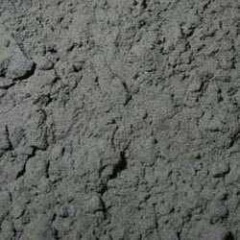Difference between revisions of "Mercuric Sulphide"
| Line 16: | Line 16: | ||
Crystals of red, α-HgS, are optically active. This is caused by the Hg-S helices in the structure.<br><br> | Crystals of red, α-HgS, are optically active. This is caused by the Hg-S helices in the structure.<br><br> | ||
β-HgS Is precipitated as a black powder when H<sub>2</sub>S is bubbled through solutions of Hg(II) salts. β-HgS Is unreactive to all but concentrated [[acids]].<br><br> | β-HgS Is precipitated as a black powder when H<sub>2</sub>S is bubbled through solutions of Hg(II) salts. β-HgS Is unreactive to all but concentrated [[acids]].<br><br> | ||
| − | Mercury metal is produced from the cinnabar ore by roasting in air and condensing the vapour.<br> | + | Mercury metal is produced from the cinnabar ore by roasting in air and condensing the vapour.<br><br> |
==Application== | ==Application== | ||
α-HgS Is used as a red pigment when it is known as vermilion. Vermilion is known to darken and this has been ascribed to conversion from red α-HgS to black β-HgS. Investigations at Pompeii where red walls when originally excavated have darkened has been ascribed to the formation of Hg-Cl compounds (e.g., corderoite, calomel, and terlinguaite) and calcium sulfate, [[gypsum]], rather than β-HgS, which was not detected.<br><br> | α-HgS Is used as a red pigment when it is known as vermilion. Vermilion is known to darken and this has been ascribed to conversion from red α-HgS to black β-HgS. Investigations at Pompeii where red walls when originally excavated have darkened has been ascribed to the formation of Hg-Cl compounds (e.g., corderoite, calomel, and terlinguaite) and calcium sulfate, [[gypsum]], rather than β-HgS, which was not detected.<br><br> | ||
Latest revision as of 07:10, 12 August 2013
| Infobox on Mercuric Sulphide | |
|---|---|
| Example of Mercuric Sulphide |  |
| Facts | |
| Origin | - |
| Stowage factor (in m3/t) | - |
| Humidity / moisture | - |
| Ventilation | - |
| Risk factors | See text |
Mercuric Sulphide
Description
Mercury sulphide is a chemical compound composed of the chemical elements mercury and sulfur. It is represented by the chemical formula HgS. Insoluble in water and alcohol.
HgS is dimorphic with two crystal forms:
- Red cinnabar (α-HgS, hexagonal, hP6, P3221), is the form in which mercury is most commonly found in nature.
- Black, metacinnabar (β-HgS), is less common in nature and adopts the zinc blende (T2d-F43m) crystal structure.
Crystals of red, α-HgS, are optically active. This is caused by the Hg-S helices in the structure.
β-HgS Is precipitated as a black powder when H2S is bubbled through solutions of Hg(II) salts. β-HgS Is unreactive to all but concentrated acids.
Mercury metal is produced from the cinnabar ore by roasting in air and condensing the vapour.
Application
α-HgS Is used as a red pigment when it is known as vermilion. Vermilion is known to darken and this has been ascribed to conversion from red α-HgS to black β-HgS. Investigations at Pompeii where red walls when originally excavated have darkened has been ascribed to the formation of Hg-Cl compounds (e.g., corderoite, calomel, and terlinguaite) and calcium sulfate, gypsum, rather than β-HgS, which was not detected.
Shipment / Storage / Risk factors
A red or black powder, a form of mercury, usually packed in steel drums.
Highly toxic by ingestion, inhalation and skin absorption. Cases have been known of spontaneous ignition of drums of this commodity through exposure to sun heat. Under-deck stowage in a cool hold is advisable and safe if the drums have not previously been subjected to heat.
For overseas transport consult the IMDG Code (International Maritime Dangerous Goods Code) and applicable MSDS sheet.











